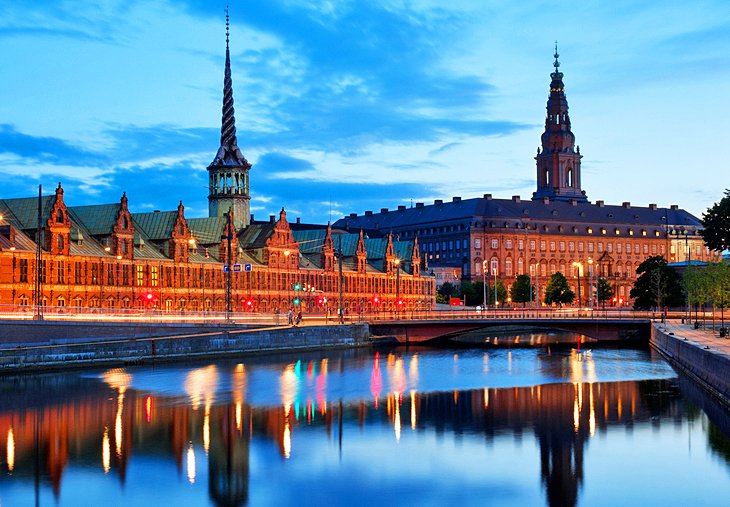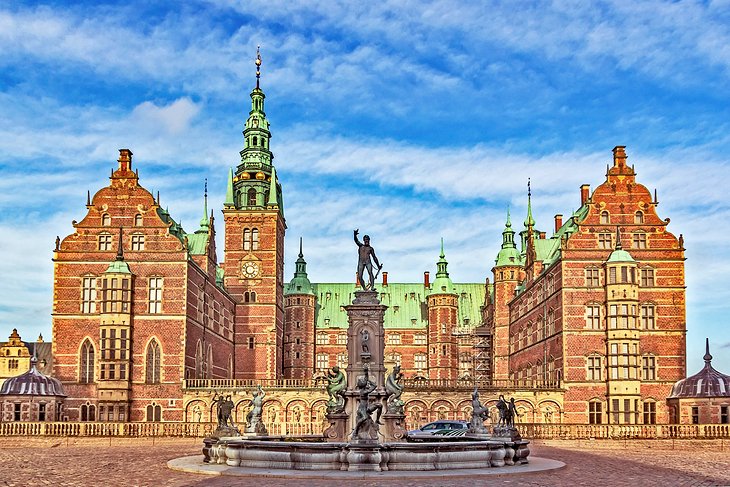
Denmark, the southernmost of the Scandinavian countries, is a land of captivating contrasts. From its vibrant capital, Copenhagen, to its charming countryside dotted with castles and Viking relics, Denmark offers a unique blend of history, culture, and natural beauty. This guide will explore the best tourist attractions in Denmark, delving into its history, highlighting key sites, providing essential travel tips, and offering insights into the best time to visit, accommodation options, local cuisine, and transportation.
A Glimpse into Denmark’s Rich History:
Denmark’s history is as captivating as its landscapes. The country boasts a rich Viking heritage, with evidence of settlements dating back to the Stone Age. During the Viking Age (8th-11th centuries), Danish Vikings played a significant role in raids and settlements across Europe, leaving an indelible mark on history.
Related Articles about Discovering Denmark: A Guide to the Kingdom’s Best Tourist Attractions:
- China: A Journey Through Time, Taste, and Grandeur
- Canada: A Tapestry of Natural Wonders and Vibrant Culture – Unveiling Its Best Tourist Attractions
- India: A Tapestry of Time, Taste, and Wonder – Your Comprehensive Travel Guide
- Unveiling the Magic of Morocco: A Guide to the Top Things to Do
- A Grand Tour of the United Kingdom: History, Haunts, and Hopping Delights
The medieval period saw the rise of the Danish monarchy and the establishment of Christianity. Denmark became a powerful kingdom, controlling vast territories across Scandinavia and the Baltic Sea. The Kalmar Union, a political union between Denmark, Norway, and Sweden, was formed in 1397, with Denmark as the dominant force.
In the 16th century, the Protestant Reformation swept through Denmark, leading to the establishment of the Lutheran Church as the state religion. Denmark’s power waned in subsequent centuries, but it managed to maintain its independence and develop a strong national identity.
During World War II, Denmark was occupied by Nazi Germany. Despite the occupation, the Danish people demonstrated remarkable resilience and resistance, famously rescuing the majority of its Jewish population from persecution.
Today, Denmark is a modern, prosperous nation known for its high quality of life, social welfare system, and commitment to sustainability. Its history is interwoven into its present, creating a unique cultural tapestry that attracts visitors from around the world.
Top Tourist Attractions in Denmark:
Denmark offers a diverse range of attractions, catering to various interests and preferences. Here are some of the must-visit destinations:
1. Copenhagen:
The vibrant capital city is a hub of culture, history, and modern design. Key attractions include:
- Tivoli Gardens: A world-renowned amusement park dating back to 1843, offering a unique blend of thrilling rides, beautiful gardens, and entertainment.
- The Little Mermaid: A iconic bronze statue inspired by Hans Christian Andersen’s fairy tale, perched on a rock in Copenhagen harbour.
- Nyhavn: A picturesque waterfront district with colorful buildings, charming cafes, and historic ships.
- Christiansborg Palace: The seat of the Danish Parliament, the Supreme Court, and the Prime Minister’s Office, offering a glimpse into Danish political life.
- Rosenborg Castle: A Renaissance castle housing the Danish Crown Jewels and other royal treasures.
- Amalienborg Palace: The winter residence of the Danish royal family, where you can witness the changing of the guard ceremony.
- National Museum of Denmark: Explore Danish history and culture from the Viking Age to the present day.
- Frederiksborg Castle: A stunning Renaissance castle located just north of Copenhagen, showcasing Danish history and art.
- Strøget: One of the longest pedestrian shopping streets in Europe, offering a wide variety of shops, restaurants, and cafes.
2. Aarhus:
Denmark’s second-largest city, Aarhus, is a vibrant cultural center with a rich history and a thriving arts scene.
- ARoS Aarhus Art Museum: A modern art museum featuring a distinctive rainbow panorama on its roof, offering stunning views of the city.
- Den Gamle By (The Old Town): An open-air museum showcasing Danish urban life from the 16th to the 20th centuries.
- Moesgaard Museum: An archaeological museum focusing on Danish prehistory, including the famous Grauballe Man, a well-preserved bog body.
3. Odense:
The birthplace of Hans Christian Andersen, Odense is a charming city with a rich literary heritage.
- Hans Christian Andersen Museum: Explore the life and works of the famous fairy tale author.
- Egeskov Castle: A stunning Renaissance castle surrounded by beautiful gardens and a moat.
4. Roskilde:
A historic city known for its Viking heritage and impressive cathedral.
- Roskilde Cathedral: A UNESCO World Heritage Site, the burial place of Danish monarchs for centuries.
- Viking Ship Museum: Discover five original Viking ships excavated from Roskilde Fjord.
5. Ribe:
Denmark’s oldest town, Ribe, is a charming medieval town with cobblestone streets and well-preserved buildings.
- Ribe Cathedral: A beautiful Romanesque cathedral with a rich history.
- Ribe Viking Centre: A living history museum recreating Viking life in Ribe.
6. Skagen:
Located at the northern tip of Denmark, Skagen is a popular seaside resort known for its stunning beaches, unique light, and artistic community.
- Grenen: The point where the Skagerrak and Kattegat seas meet, creating a unique natural phenomenon.
- Skagen Museum: Dedicated to the Skagen Painters, a group of artists who captured the beauty of the region in the late 19th and early 20th centuries.
- The Buried Church: A sand-covered church that was gradually swallowed by the dunes.
Travel Tips for Denmark:
- Currency: The Danish currency is the Krone (DKK). Credit cards are widely accepted, but it’s always a good idea to have some cash on hand.
- Language: Danish is the official language, but English is widely spoken, especially in tourist areas.
- Weather: The weather in Denmark can be unpredictable, so pack layers. Summers are generally mild, while winters can be cold and snowy.
- Transportation: Denmark has an excellent public transportation system, including trains, buses, and ferries. Cycling is also a popular way to get around, especially in cities.
- Accommodation: Accommodation options range from budget-friendly hostels to luxury hotels. Consider booking in advance, especially during peak season.
- Tipping: Tipping is not customary in Denmark, as service charges are usually included in the bill.
- Respect Local Customs: Be mindful of local customs and traditions. Danes are generally polite and reserved, so avoid being overly loud or boisterous.
- Learn Basic Phrases: Learning a few basic Danish phrases, such as "Tak" (thank you) and "Hej" (hello), will be appreciated by locals.
Best Time to Visit Denmark:
The best time to visit Denmark depends on your interests and preferences.
- Summer (June-August): This is the peak season, with warm weather, long daylight hours, and numerous outdoor events.
- Spring (April-May) and Autumn (September-October): These shoulder seasons offer pleasant weather, fewer crowds, and lower prices.
- Winter (November-March): While winters can be cold and dark, they also offer a unique charm, with Christmas markets, cozy cafes, and opportunities for winter sports.
Nearby Hotels:
Denmark offers a wide range of accommodation options, from budget-friendly hostels to luxury hotels. Some popular hotels include:
- Hotel Sanders (Copenhagen): A stylish boutique hotel in the heart of Copenhagen.
- Radisson Collection Royal Hotel, Copenhagen: A historic hotel designed by Arne Jacobsen.
- Hotel Marselis (Aarhus): A modern hotel located near the beach in Aarhus.
- Comwell H.C. Andersen Odense: A comfortable hotel in the center of Odense.
- Hotel Britannia Esbjerg: A luxury hotel near the beach in Esbjerg
Local Food:
Danish cuisine is known for its fresh, seasonal ingredients and innovative techniques. Be sure to try these local specialties:
- Smørrebrød: Open-faced sandwiches on rye bread, topped with various ingredients such as herring, roast beef, or shrimp.
- Frikadeller: Danish meatballs, typically served with potatoes and gravy.
- Stegt Flæsk med Persillesovs: Crispy pork belly with parsley sauce and potatoes, considered a national dish.
- Æbleskiver: Round pancakes, traditionally served during the Christmas season with jam and powdered sugar.
- Kanelsnegl: Cinnamon rolls, a popular pastry in Denmark.
- New Nordic Cuisine: Explore restaurants offering innovative dishes using local and seasonal ingredients, often with a focus on sustainability.
- Beer: Denmark has a long tradition of brewing beer, so be sure to try some local brews.
Transportation Options:
Denmark has an excellent public transportation system, making it easy to get around the country.
- Trains: The Danish train network is efficient and reliable, connecting major cities and towns.
- Buses: Buses provide access to more remote areas and smaller towns.
- Ferries: Ferries connect the various islands of Denmark, as well as neighboring countries.
- Cycling: Cycling is a popular mode of transportation in Denmark, especially in cities. Bike rentals are readily available.
- Car Rental: Renting a car provides flexibility to explore the countryside at your own pace.
Conclusion:
Denmark offers a captivating blend of history, culture, and natural beauty, making it a truly unforgettable travel destination. From the vibrant streets of Copenhagen to the charming countryside dotted with castles and Viking relics, Denmark has something to offer every traveler. By following this guide, you can plan your perfect trip to Denmark and discover the magic of this Scandinavian kingdom.








